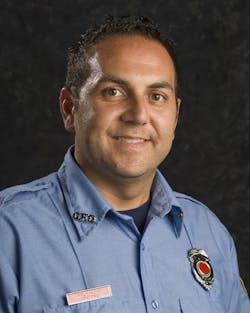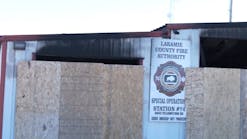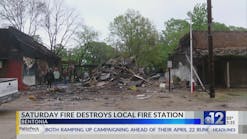Do you remember the days when you were a kid in school and the fire department stopped by to do a fire drill? They would activate the fire alarm and it meant getting out of class for 10 or 15 minutes on a nice day, talking with your friends and high-fiving the firefighters on the way back in. Looking at it now, what did the people involved actually get out of it? Did the school staff, administrators and students really benefit from it? What did they learn? The only thing that really happened was some missed class time.
Today, things are a bit different. Schools and businesses take the safety and security of their people very seriously and it has become a top priority. When firefighters go to a location to perform a fire drill, we better have some justification as to why we are going there. If it means disrupting a work or school day, the administrators want to know what the benefit will be. Here at the Gates Fire District in upstate New York, we have developed a very strong relationship within our community. We are a town comprised of about 32,000 people with several thousand more during the peak work hours spaced out over 20 square miles. Public education is a top priority and it doesn’t stop in the classroom.
Demand grows for fire prevention drills
We have specifically seen an increase in demand for our services in fire prevention programs. Throughout the course of the year we are out conducting fire drills weekly in schools and many local businesses. We developed a Fire Drill Assessment Form that references the New York State Fire Code as a way to evaluate the effectiveness of the drill. This report provides immediate onsite feedback to schools/businesses so they know how their facility was rated. It helps determine if there is room for improvement and allows us to offer suggestions. There are many benefits for both the community and the crews conducting the drills. In addition, it also provides us an opportunity to become familiar with the different buildings within our fire district.
So how does this work and how do we build relationships within our community to become partners in fire safety? We first need to determine our target audience and when we do, we never want to force our way in. We need to make our customers feel comfortable. Many times they may feel as though we are trying to inspect their buildings at the same time, so scheduling a tour or walk-through helps with not only developing a relationship with the representative and understanding the layout of the building, but it also helps us to learn what their operation is all about. The tour is a win-win for everyone involved.
Once we have our initial meeting, we like to give our customers time to think things over and talk to their staff. This provides them the ability to take the first step to schedule an appointment with us … and they usually do. That first meeting is so important and it can make or break the relationship. They need to feel comfortable with who we are and know we are only there to help make their facility safer for their staff, and in the schools, the students.
So how does this drill really help and why do we encourage it? The U.S. Fire Administration (USFA) reports over 3,000 deaths, 17,000 injuries, and close to 1.3 million fires reported each year. Sadly, 80-100 firefighter deaths are also reported every year. If that is not reason enough, I don’t know what is. We want to reduce these numbers through this training not only for ourselves but for our citizens as well.
The fire drills
On the day of the drill, crews arrive on scene and we meet with the manager or principal. We try hard to not bring a lot of attention to ourselves to scare or surprise the occupants. Truthfully, this part sometimes is very difficult when we are pulling up in big red fire trucks. We recommend leaving the fire alarm in its normal operating mode so when it is activated it runs through its complete cycle. We not only want to test the students and staff, but also want to test the system to see if works properly from start to finish; and since the crews are already on scene, you won’t have any apparatus responding across town for a false alarm. This tests the central station, the 9-1-1 center, and our fire department and helps document the amount of time it takes the alarm to reach us.
We try and make the assessment as simple as possible. We want it to be easy to read and right to the point. Currently we are using iAuditor on our iPads. This allows us to immediately send the report to the representative once the drill is complete. Once all of our personnel are in place throughout the building, the alarm is activated. We document the start and stop time of the drill including the amount of time it takes to account for every person in the building. At first, this can be a bit difficult if this is the first time a drill has been conducted at the location; however, it must be done in order to confirm everyone is out of the building.
We also watch to ensure everyone has reported to their designated meeting point, fire lanes are clear upon our arrival, the alarm is heard throughout the building and the needs of the handicapped are being addressed. We also determine how many people were evacuated, the amount of time the alarm took to notify the fire department and if the safety equipment (such as panic hardware on doors, pull stations, exit signs, etc.) are working. These are all important components of the fire drill. Many times the occupants have never given thought to what we are looking for and are surprised; however, we never hear a complaint and there is always a thank you.
Our goal is to reach as many businesses and schools that will allow us access to conduct these drills. We rarely experience a problem because an explanation is always provided on how a fire drill will help the organization. We also let them know that we provide documentation that the drill was conducted and the service is completely free. We never charge for fire prevention services.
In 2014, we evacuated about 3,000 people during drills and we are anticipating about 5,000 people by the end of 2015. Clearly, this is cumbersome and creates additional work for us, but it helps to provide our citizens with the means needed to be able to escape a burning building. Always remember, education, prevention and protection are the building blocks to a safer community!
JOSEPH MANUSE has been the career fire prevention officer for the Gates, N.Y., Fire District since 2008. He has been a volunteer firefighter with the Gates-Chili Fire Department for almost 28 years, holding the ranks of lieutenant, captain and assistant chief. As the fire prevention officer, he is responsible for providing various fire prevention and fire safety lessons through community outreach programs within the Gates-Chili School District, local businesses and senior centers. Manuse regularly conducts fire extinguisher/fire safety programs with many of our local businesses, assists with fire evacuation drills, and conducts a Junior Fire Academy every summer for middle school students. In addition, Manuse regularly attends training classes at the New York State Fire Academy and the National Fire Academy to maintain his certifications. In addition to his regular job responsibilities, he has obtained certifications as a Building Safety Inspector, Fire Instructor I and Fire Instructor II and is currently enrolled and working toward a fire protection associates degree.






